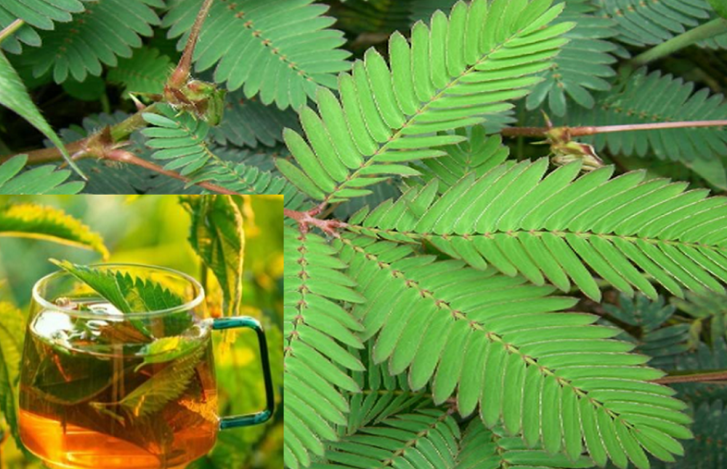Mimosa pudica, commonly known as the “sensitive plant,” “touch-me-not,” or “shy plant,” is widely recognized for its captivating response to touch—its leaves fold inward when disturbed. But beyond this well-known trait, Mimosa pudica has been used for generations in various traditional healing systems. Different parts of the plant—leaves, stems, and roots—have long played a role in herbal medicine. In recent years, Mimosa pudica tea has gained popularity for its possible health benefits. Below, we outline how this tea is made, its traditional uses, and what to consider for safe use.
Potential Health Benefits of Mimosa Pudica Tea
Digestive Support
In traditional medicine, Mimosa pudica has often been used to help relieve digestive issues.
Some believe it may ease diarrhea or mild gastrointestinal irritation.
The presence of plant compounds like tannins and flavonoids could contribute to an astringent, soothing effect on the digestive lining.
Antimicrobial and Antiparasitic Activity
Preliminary studies suggest Mimosa pudica extracts may offer some antimicrobial effects.
In folk medicine, it’s occasionally used as a natural aid against intestinal parasites—though strong clinical evidence remains limited.
Anti-Inflammatory Potential
Mimosa pudica has been used in some cultures for its perceived anti-inflammatory qualities, especially when applied topically for skin irritation or minor wounds.
Internally, drinking the tea is sometimes thought to reduce inflammation, but more research is necessary to confirm these effects.
Wound Healing and Skin Care
Traditional remedies include topical applications—pastes or poultices—made from the plant’s leaves or roots to support healing of small cuts or skin flare-ups.
The tea, once cooled, may also be used as a gentle skin rinse for irritations.
Calming and Relaxation
Some traditions reference Mimosa pudica as having a mild calming or sedative influence, potentially offering light support for anxiety or restlessness.
Scientific validation is limited, but anecdotal experiences suggest it may encourage relaxation.
How to Make Mimosa Pudica Tea
Sourcing the Plant
Use only Mimosa pudica that is grown organically and free of chemicals or contaminants.
If not harvesting your own, choose a trusted source that specializes in quality herbs.
Drying the Plant
Pick the leaves (and soft stems, if desired), rinse them gently, and lay them out to dry in a warm, shaded area with good airflow.
Once crisp enough to crumble, they’re ready to use.
Brewing Instructions
Ingredients: About 1 teaspoon of dried Mimosa pudica leaves per cup of water.
Steps:
– Boil fresh, filtered water.
– Pour the hot water over the dried leaves in a cup or teapot.
– Cover and steep for 5–10 minutes.
– Strain and serve. Add lemon or honey if desired.
The flavor is generally mild with earthy, herbal notes. Adjust steeping time or leaf amount to taste.
Safety and Precautions
Limited Scientific Research
Although used traditionally, comprehensive clinical trials on Mimosa pudica are scarce. Its effectiveness and safety for treating specific conditions are not fully confirmed.
Possible Side Effects
Some users may experience side effects like stomach discomfort or skin sensitivity.
Stop using it if symptoms such as nausea, itching, or rashes occur, and consult a healthcare provider.
Pregnancy and Nursing
Due to the lack of reliable research, it’s best for pregnant or breastfeeding individuals to avoid Mimosa pudica unless specifically advised by a professional.
Drug Interactions
If you’re taking prescription medications or have chronic health conditions, consult a doctor before adding Mimosa pudica to your routine.
Ensuring Quality and Accuracy
Make sure the plant you’re using is correctly identified. Mistaking it for another species or using contaminated herbs could be dangerous.
Other Uses Beyond Tea
-
Topical Applications: Traditional uses include pastes or poultices for skin conditions or minor wounds.
-
Herbal Supplements: Some products offer Mimosa pudica in capsule form, often aimed at digestive or antiparasitic support.
-
Ornamental Value: Its touch-sensitive leaves also make Mimosa pudica a popular decorative plant.
Mimosa pudica tea blends centuries of traditional use with modern curiosity. While its gentle reputation and fascinating behavior continue to attract interest, scientific research into its full benefits is still ongoing. For those who want to explore this herbal infusion:
-
Be sure to source and identify the plant correctly.
-
Start with a small amount to observe how your body responds.
-
Consult a healthcare provider for persistent health concerns.
As with all herbal remedies, informed and mindful use is essential for getting the benefits without the risk.







